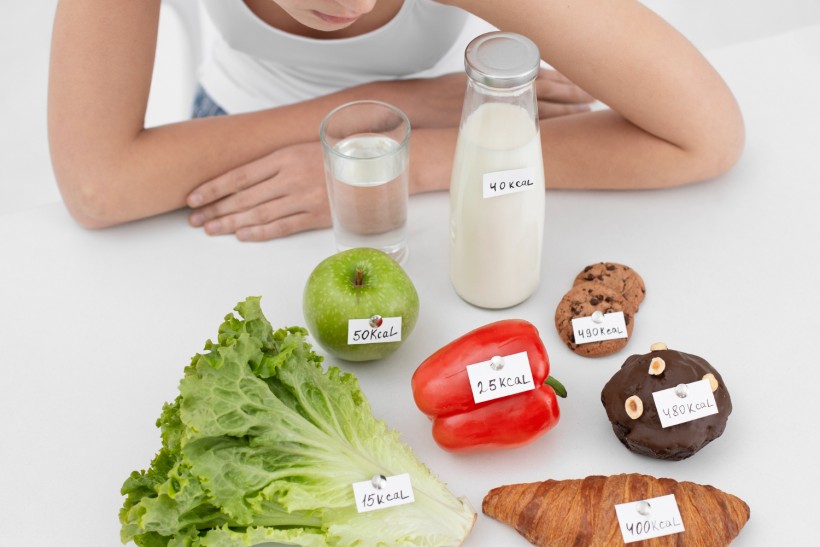
Consumers are currently looking for additional information in order to make informed dietary decisions. This is the point where accurate and detailed nutrition labels come in.
Taking full advantage of advanced food label makers can be game-changing for food manufacturers, not only in ensuring their compliance with regulations but also in unlocking the full power of precision nutrition.
The Science of Food Analysis
At the heart of every accurate food label is a thorough understanding of what the food is composed of. This process usually involves scientific analysis techniques that break down into its various components. They include:
- Macronutrients: Macronutrients are foods that are needed in large quantities in the diet, including carbohydrates, proteins, water, and fats. They provide the body with energy.
- Micronutrients: These are required in the body in very small amounts. They include vitamins like Vitamin A and minerals. However, they have a significant impact on the body's overall health, and a deficiency in any of them can cause severe or life-threatening conditions.
- Sugars: These include sugars that occur naturally, like fructose and added sugars. They boost instant energy and promote productivity. Without sugar, it would be impossible to keep up with the demands of daily life.
- Fiber: Sources of fiber include legumes, vegetables, and nuts, as well as whole grains and fruits. Fiber helps to keep blood sugar and hunger in check by regulating the body's use of sugars. It also aids in digestion and overall gut health.
Unlike in the past, when food analysis involved wet chemistry methods that took up too much time and required specialized expertise, advancements in technology have resulted in the development of instrumental techniques that, together with wet chemistry methods, paint a clear picture of the food's nutritional profile.

High-Performance Liquid Chromatography (HPLC)
HPLC separates compounds that have been dissolved in a liquid sample based on their interaction with a stationary phase. It further allows quantitative and qualitative analysis of the type of components and the amount of each present in the specific sample.
Gas Chromatography (GC)
This is an analytical technique that is used to detect and separate the chemical components of a sample mixture that can be vaporized without decomposition in order to establish their absence or absence and/or their quantities. These chemical components can be food samples or gasses.
Mass Spectrometry (MS)
Mass spectrometry is an analytical tool mostly used to measure the mass-to-charge of one or more components present in a sample.
Discovering the Power of Precision
Meeting regulatory requirements is important; to that end, nutrition label makers come equipped with advanced capabilities that offer deeper assistance. Here's how they achieve this:
- Detailed nutrient breakdown: Modern label makers can analyze different types of carbohydrates (simple or complex), fats (saturated, unsaturated, or trans fats), and even get specific sugar types (glucose, fructose, and sucrose). Such detail gives consumers the ability to make informed choices concerning the type of nutrients that they consume.
- Food profiler: Label makers can generate reports that categorize food based on its nutrient content. For example, if a food is high in protein and fiber with minimal saturated fat, it might be classified as "heart-healthy."
- Allergen detection: Advanced label makers can identify and quantify potential allergens such as gluten, soy, and peanuts. This is important because food safety can be guaranteed, and it makes it possible to cater to consumers with allergies or specific dietary restrictions.

Unlocking Consumer Insights
After establishing the science behind the label, the next step is having effective communication. Here's how food label makers translate intricate data into actionable and useful information for consumers:
- Clear formatting: Labels should be easy to navigate and read, with key nutritional information such as serving size, calories, and macronutrients prominently displayed.
- Standardized symbols and icons: Nutrition label makers use universally understood symbols to highlight key features like "low sodium" or "high fiber" and enhance communication.
- QR codes and interactive features: QR codes can link to detailed nutritional or interactive features that let users explore the food's nutrient profile in greater depth.
Nutrition label makers combine scientific accuracy with clear communication to promote informed consumer choices and brand transparency.
Conclusion
Nutrition label makers play a pivotal role in ensuring precision and transparency in food labeling. They do more than just aid compliance; they now harness the power of precision nutrition to empower consumers and foster a future of personalized wellness.
Nutrition label makers have now become powerful tools for promoting consumer choices and driving innovation in the food industry by closing the gap between scientific data and clear communication.
As the field of food science continues to evolve, so will the art of communicating this information in a way that everyday people will understand, making nutrition labels not just informative but truly transformative.
* This is a contributed article and this content does not necessarily represent the views of sciencetimes.com














